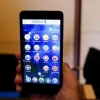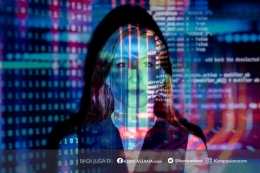Abstract
The development of information technology gives advantages for people, especially for students who are studying in education field or as teacher candidates. The information technology has assisted students to accomplish several academic activities. However, the information technology development might be misused or misconduct for high grades purposes, such as copy and paste from other person’s idea, take person’s idea or compile academic material without wrote its source, as well as use cell phone to save and browse answers during examination process in class. Therefore, if students behave academic misconduct or cheating when they were students, it can influence their behavior in work place or as a teacher. This study describes cheating behaviors using information technology among 90 education students as participants. The study showed that cheating behaviors occurs more than two times in 16.7% participants used calculator or cell phone to save exam materials and read it during examination, 14.4% participants browsed internet through cell phones to get answers, and 70% percent participants copy and paste from the internet source to do tasks from lecturer. Other cheating behaviors occur 1-2 times in 24.2% participants used other opinion or theory without citing, and 18.9% participant compiled materials from internet without citing all sources.
Keywords: academic cheating behaviors, education student, information technology
Cheating behavior phenomena in academic institution has been problem in the most part of the world. According the research Anderman and Murdock (2006): that cheating behavior occurred in the elementary school (Kanfed&Duerfeld, 1968), junior and high school (Anderman, Griessinger, & Westerfield), universities (Newsted, 1996), indeed at the post graduate (Baldwin, 1996). In the 2005, McCabe through surveyed on 18.000 students at 61 school through the United States, had found that cheating behavior had been done by 47% of respondents (Kisamore, 2007). At the university level, according to Whitley’s research on 107 research papers of students and academic staffs, found that 70% of respondents had done cheating in their research paper.
At the university level, cheating behavior can decrease quality of student and academic institution. Moreover, if its condition to be still existed, it will be questions and challenges on the academic integrity and credibility of academic institution (Anderman 2006). As a result, the quality and quantity of learning process can not reach optimum and learning goals. Moreover, it will influence student behavior that keep their cheating behavior, when they work in the work place or become teacher or lecturer. Lawson (2004) argued that cheating behavior of students can be one of misconduct predictors at work place. This argument is supported by Becker (2006), that students, who tend to be dishonest for academic process, they will do several dishonest conducts at work place.
One of cheating behaviors at work place can be found on teachers who done misconduct or cheat behavior during national examination process. Modes of cheating behavior, that teacher done through giving question’s national examination and answer to their students before national examination (Ade irawan, www.forum.unnes.ac.id). Another one can be fond on 1.082 teachers that used false documents or paper to get certification, in the Riau Provinces (Buchori, Kompas, 2010). Teacher profession should be one of professions that have high moral standard, because in the Indonesia context, teacher becomes moral leader and indicator for most people especially for their students. The law number 14, 2005 on teacher and lecturer stipulated that teacher should have four competences, that one of is personality competence. Personality competence are high moral standard, honest, and being followed behavior by student and people.
The honest conduct or behavior should be developed and embedded since earlier at school as well as teacher profile. At least, since in the university, the student who will be a teacher, should keep and develop their honest behavior as part of their conduct.
Theory Review
Academic Cheating Behavior
Cheating behavior in academic are behave or conducts that reflect dishonest to get high result. It can be found from activities such as read notes or book during close book examination, take one’s idea without wrote its source. As a result, assessment process and results become invalid (Gomez, 2001, in Mason, 2006). The student, who has cheating conduct, should not have a precise capacity to get a certain or high grade. It can be argued, that if the student have high grade, it does not reflect on real his/her capacity.
Cheating behavior will be chosen by students, if they are in the learning process that demand maximum grade, and have little chance to reach it (Wolfolk, 2004). The students, who have limited capability and get pressure for high grade, will search way to reach it. Many students will increase quality and quantity of learning activities, another will search activities, that less quantity and works trough cheating behavior. The other factor is result of a limited time and chance to learn more. Actually, many students have high capacity to get high grade or result, however limited time and chance to learn (read, discuss, make paper) will cause cheating behavior.
Influencing Factors of Cheating Behavior
Generally, cheating behavior can be influenced by internal and external factors. Internal and external factors can divided into demography, individual, situational (Robinson et.al., 2004). Demography factors are age, sex, school level, and grade. Individual factor is low self-efficacy academic. Situational factors are less controlling during examination from teacher, lecturer or academic institutions.
Impact of academic cheating
Academic cheating has negative impact for individual who done and its academic institutions. Academic integrity/honesty should be serious concern of teacher/lecturer, students, and all people (Bushmeller, 1999, Wilson, 1999, in Mason, 2006). For teacher/lecturer, a learning process and result becomes invalid. This behavior will influence chance of students, who do not cheating conducts, such as working chance and accomplishing learning process at the university (Bushweller, 1999, in Mason, 2006).A cheating student have invalid grade, even he/she has high grade. His/ her grade will close chance of the student who does not cheat to entry work place competition. In the other side, for academic institutions, a cheating conduct will decrease the quality standard of academic institution compare to other institution. Stakeholders will question on the credibility of institution.
Mode of cheating behavior
There are several cheating behavior mode. According Newsted (1996, in Haryanto,1998) there are 21 modes of cheating behavior, which divided into 3 group categories. There are
- Cheating behavior in the class during examination process:
- Write the answer of other-close sitting student during examination
- Bring materials, which are prohibited to be used during examination
- Get information on examination questions earlier and silently
- A planned collusion among more than two students to communicate each other during examination process.
- Give false information on medical condition to get a special permission from teacher/lecturer.
- Send another person to do examination behalf on student
- Cheating behavior outside classroom or during accomplish study tasks:
- Write material or one’s idea without known by its writer.
- Write false data.
- Allowed his/her paper for plagiarism
- Create false reference of bibliography
- Write material for paper from books or others printed material without wrote its source.
- Change research data.
- Take plagiarism with known by its owner.
- Put certain journal, book or article in wrong place that another student can not find it in library or cut piece or page of book, journal and article.
- If teacher or lecturer gives chance for students to review paper or examination answers each other, they give more grade than should be.
- Claim as individual creation, that actually it has group creation.
- Do research paper for other person.
- Give false medical information or other information to get longer time or freedom to submit tasks
- Copy other student’s paper without known by it’s owner
- Order a paper from other person
- Try to get special exception through supply or give gift some money or material
Meanwhile, according to Anderman (2007) the academic cheating behaviors are:
- Cheating while doing homework or tasks
- Using crib notes during examination
- Copying other student’s answer during examination
- Copying other student’s answer while didn’t understand academic tasks
- Copying other student’s answer while didn’t understand homework
Metodology
Research participants are education students in Jakarta State University, 21 male and 79 female. The instrument, which will be use in this research, is intensity scale of academic cheating behavior by using information technology. Types of academic cheating behavior as a part of instrument, are selected through preliminary survey. As a result, there are seven types of academic cheating behavior by using information technology. Respondents identified how many times they did academic cheating behavior in the last one year. The options are: never, 1-2 times, and more than 2 times.
Table 1.
Respondent’s answers in percentage
Academic Cheating Behavior
In the last one year, how many times have you done it?
Never
1-2 times
>2 times










